Digital deconstruction: Paul Stephenson's antique graffiti at StolenSpace
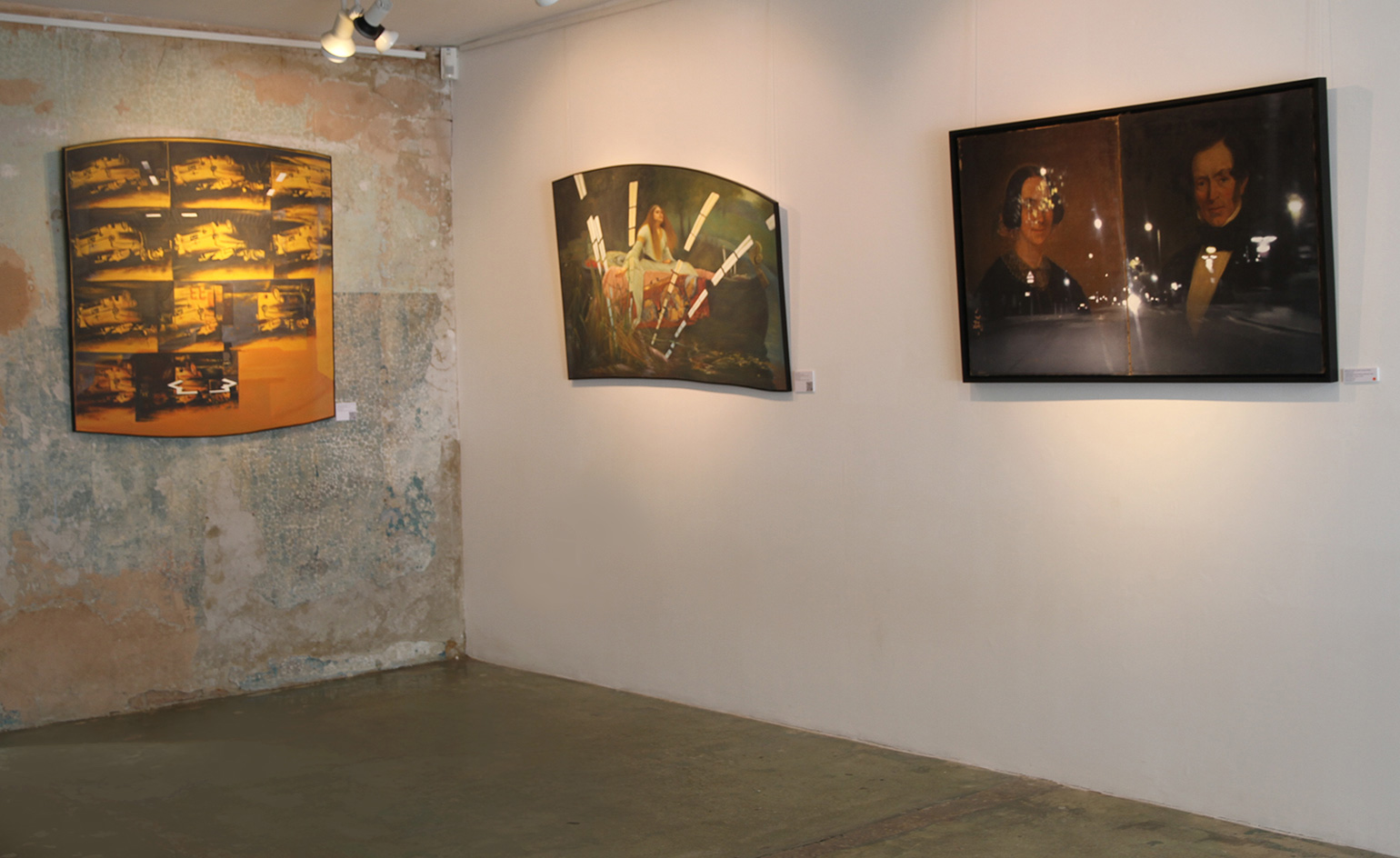
When is an artwork finished? It's a question that plagued artists long before Leonardo Da Vinci famously threw down his brushes (one imagines) and proclaimed, 'Art is never finished, only abandoned.' Adding a whole new curve ball to this torment is London-based artist Paul Stephenson, who gives his own finishing touches to 200-year-old works, a handful of which are currently on display at StolenSpace gallery, Brick Lane.
Stephenson buys 18th and 19th century works at auction from known artists (Alexander Melville, Thomas Bond Walker, William Allsworth) and sets about 'collaborating' with them, mingling old and new in a jarring way that the art world has rarely seen. He's already established a name for himself on the street scene for his novel 'sous rature' technique, where he physically erases sections of pre-existing paintings. This nervy act of removal, the artist explains, draws attention to the 'remaining void', and gives new meaning to the original. 'It's like when the Mona Lisa was stolen in 1911. More people came to look at the vacant space left on the wall than had come to look at the actual painting the previous week.'
StolenSpace gallery – one of a handful of London spaces drawing attention to the increasingly high-end market for 'urban art' – is the ideal home for Stephenson's 'Forced Collaboration', seeing as it is owned by fellow artist D*Face, one of his early inspirations. In the warehouse-style gallery, complete with bare-brick walls, the 'sous rature' technique has been given space to develop into a series of complex new works.
Stephenson's Watermark Paintings also use works bought at auction, but instead of erasing details, he paints new ones. The artist uploads an image of the original painting onto the online photo sharing service Shutterstock, which applies its familiar watermark. Then, he carefully paints this logo directly onto the original, and so 'the work physically and virtually exists simultaneously, in two different spaces'.
Similarly, his Reflection Paintings start life at auction. Stephenson paints phone or computer screen reflections onto original works, commenting on how we're increasingly viewing art through a screen. They're the kind of reflections you might pay little attention to, but when they're immortalised in oil on canvas, the effect on the artwork is undeniable. Stephenson explains, 'I started concentrating on these superimposed images, and seeing the beauty in them.' The billowing cloud-like additions to Reflection on Jane Camp, originally painted by Alexander Melville, 1877, redefine Camp's serene expression, and add a mythical aura to an otherwise face-on, austere Victorian portrait.
Stephenson has no issue with calling his work graffiti, and he's keen to differentiate it from other forms of 'spray-can' art. 'A painting made using aerosol on a blank canvas is not graffiti. The surface is what makes the difference.' By choosing such controversial surfaces to work on, some critics are bound to see it as a little brazen. To others, it's a fascinating way of communicating with a bygone artistic era, while highlighting the changes technology has had on the way we consume art. Stephenson simply thinks of his work as DJing. 'I am taking old paintings and mixing them with different images to make something new, like DJs did in the 1990s. I guess whether it is positive or negative depends on whether you're into hip-hop.'
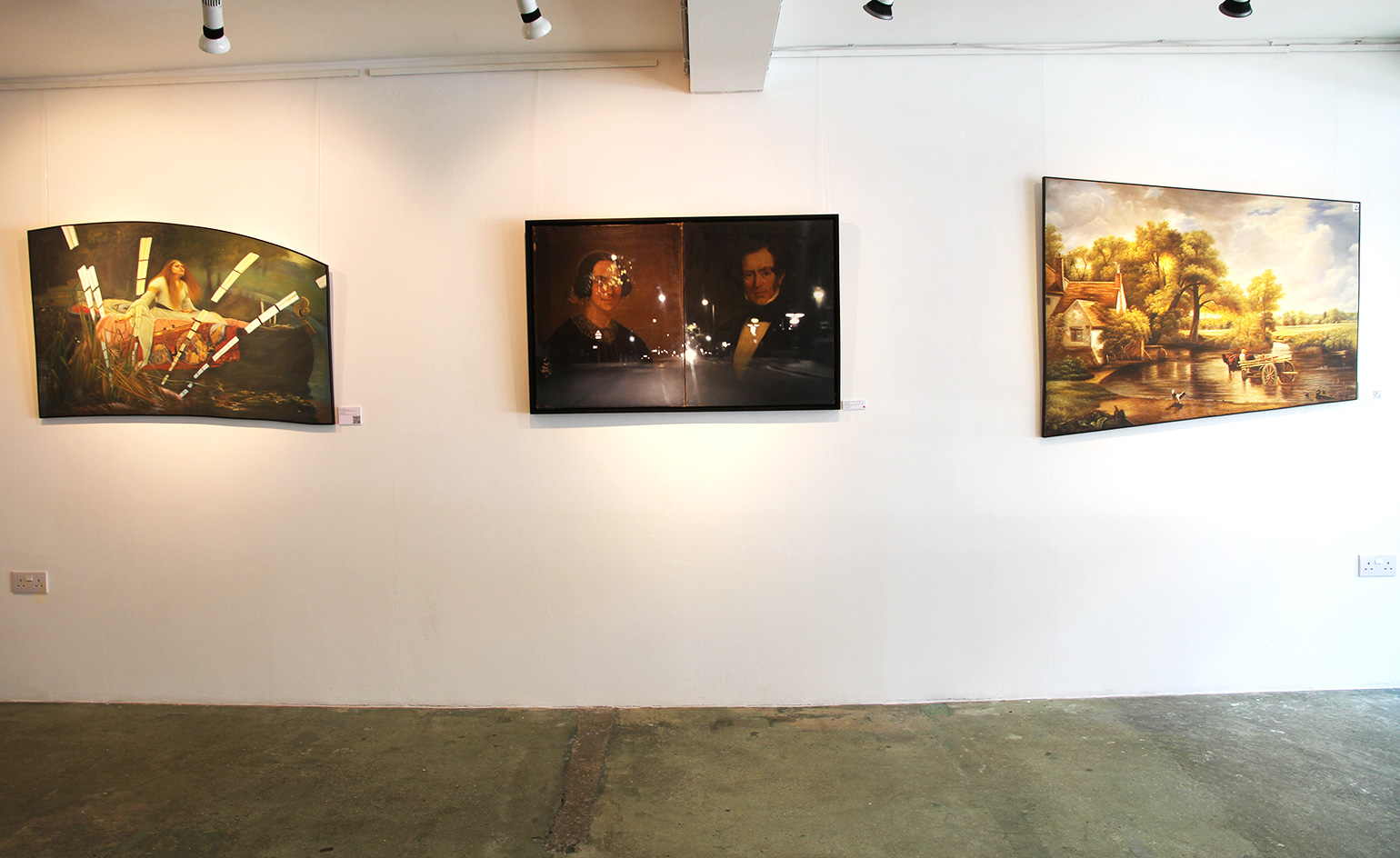
StolenSpace gallery – one of a handful of London spaces drawing attention to the increasingly high-end market for ’urban art’ – is the ideal home for ’Forced Collaboration’, seeing as it is owned by fellow artist D*Face, one of his early inspirations
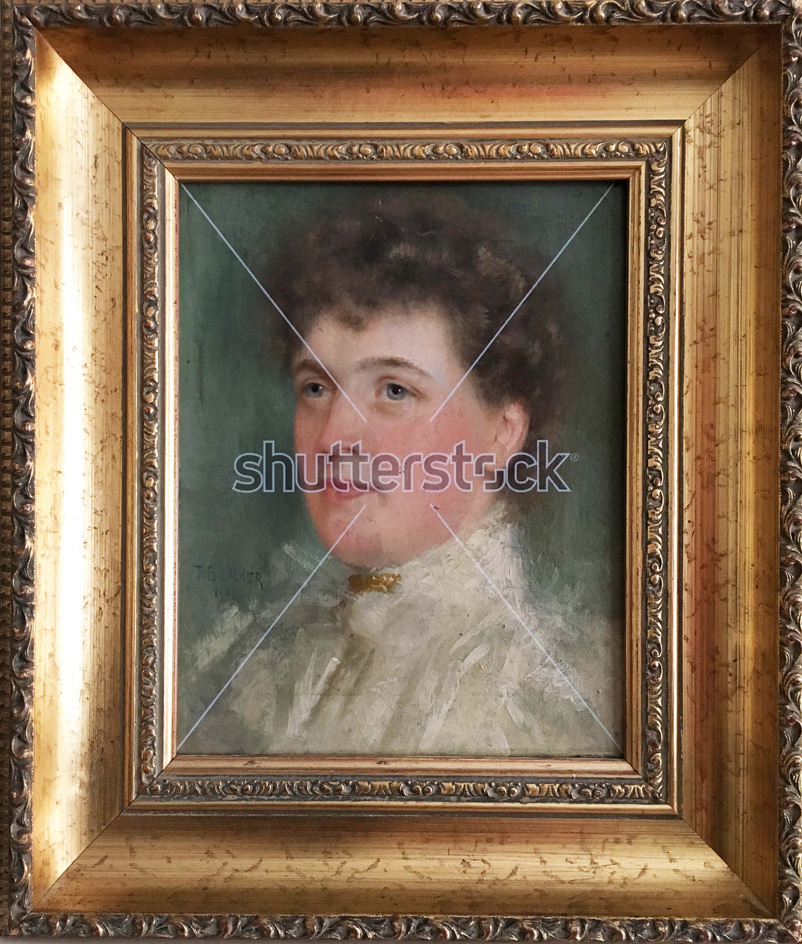
Stephenson’s ’Watermark Paintings’ sees the artist paint new details on auction-bought works. The artist uploads an image of the original painting onto the online photo sharing service Shutterstock, which applies its familiar watermark. Pictured: Watermarked Painting #436544659 (Shutterstock meta) Originally painted by Thomas Bond Walker, 1901, 2016
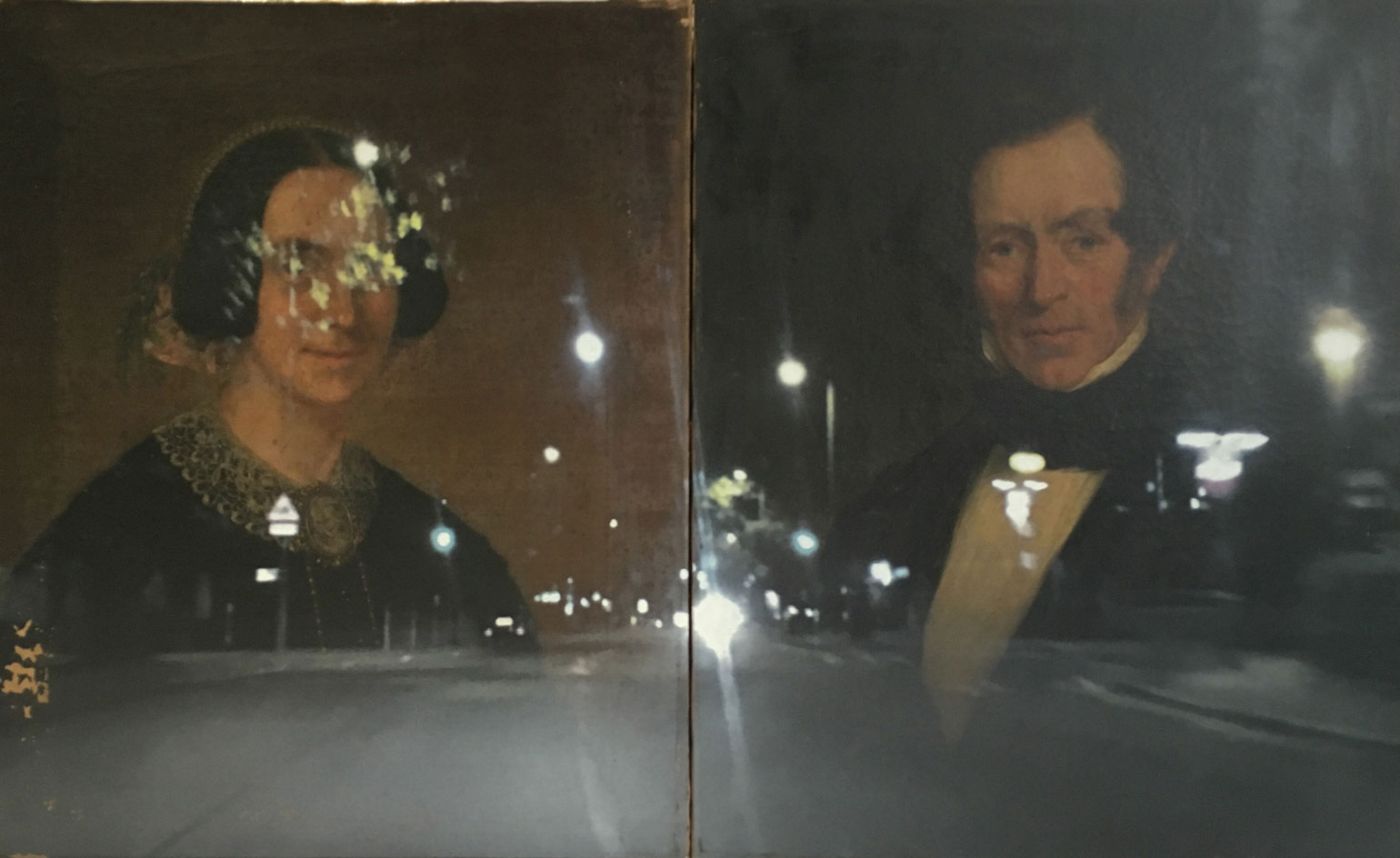
Stephenson paints phone or computer reflections onto original works, commenting on how we’re increasingly viewing art through a screen. Pictured: Reflection on Mr and Mrs Thomas Walker, Camden Town, Originally painted by William Allsworth, 1855, 2016

The billowing cloud-like additions to Reflection on Jane Camp (pictured), originally painted by Alexander Melville, 1877, give new meaning to the serene expression on Camp’s face, and add a mythical aura to an otherwise face-on, austere Victorian portrait
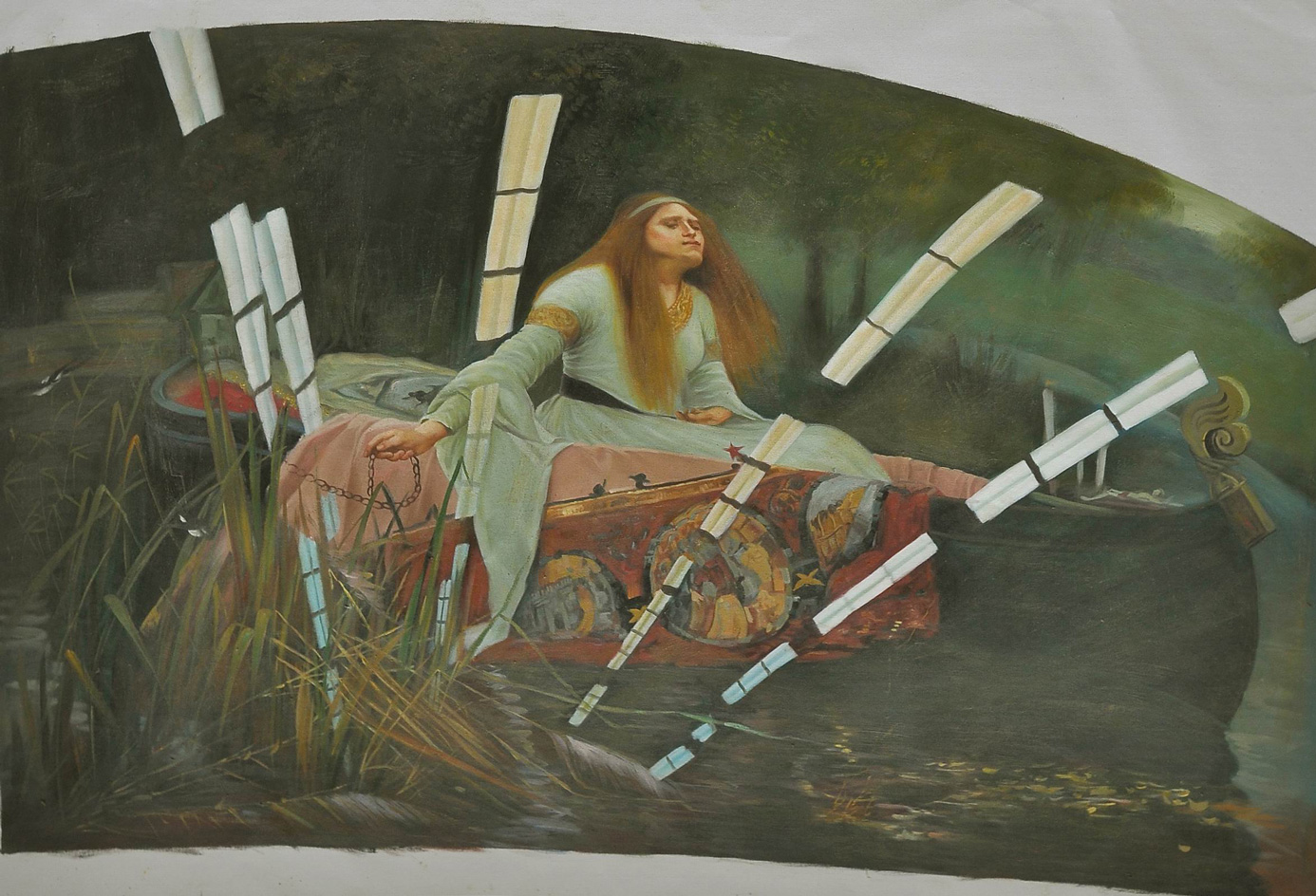
Another series of works included in the exhibition uses distorted images from the ’Google Cultural Insitite’ – an archive that records images for virtual tours. Stephenson recreates them from scratch, painting every Google-imposed incongruity in exacting detail. Pictured: The Lady of Shalott (Google Cultural Institute) After Waterhouse, 2016
INFORMATION
’Forced Collaboration’ is on view until 28 August. For more information, visit the StolenSpace gallery website
ADDRESS
StolenSpace
17 Osborn Street
London, E1 6TD
Receive our daily digest of inspiration, escapism and design stories from around the world direct to your inbox.
Elly Parsons is the Digital Editor of Wallpaper*, where she oversees Wallpaper.com and its social platforms. She has been with the brand since 2015 in various roles, spending time as digital writer – specialising in art, technology and contemporary culture – and as deputy digital editor. She was shortlisted for a PPA Award in 2017, has written extensively for many publications, and has contributed to three books. She is a guest lecturer in digital journalism at Goldsmiths University, London, where she also holds a masters degree in creative writing. Now, her main areas of expertise include content strategy, audience engagement, and social media.
-
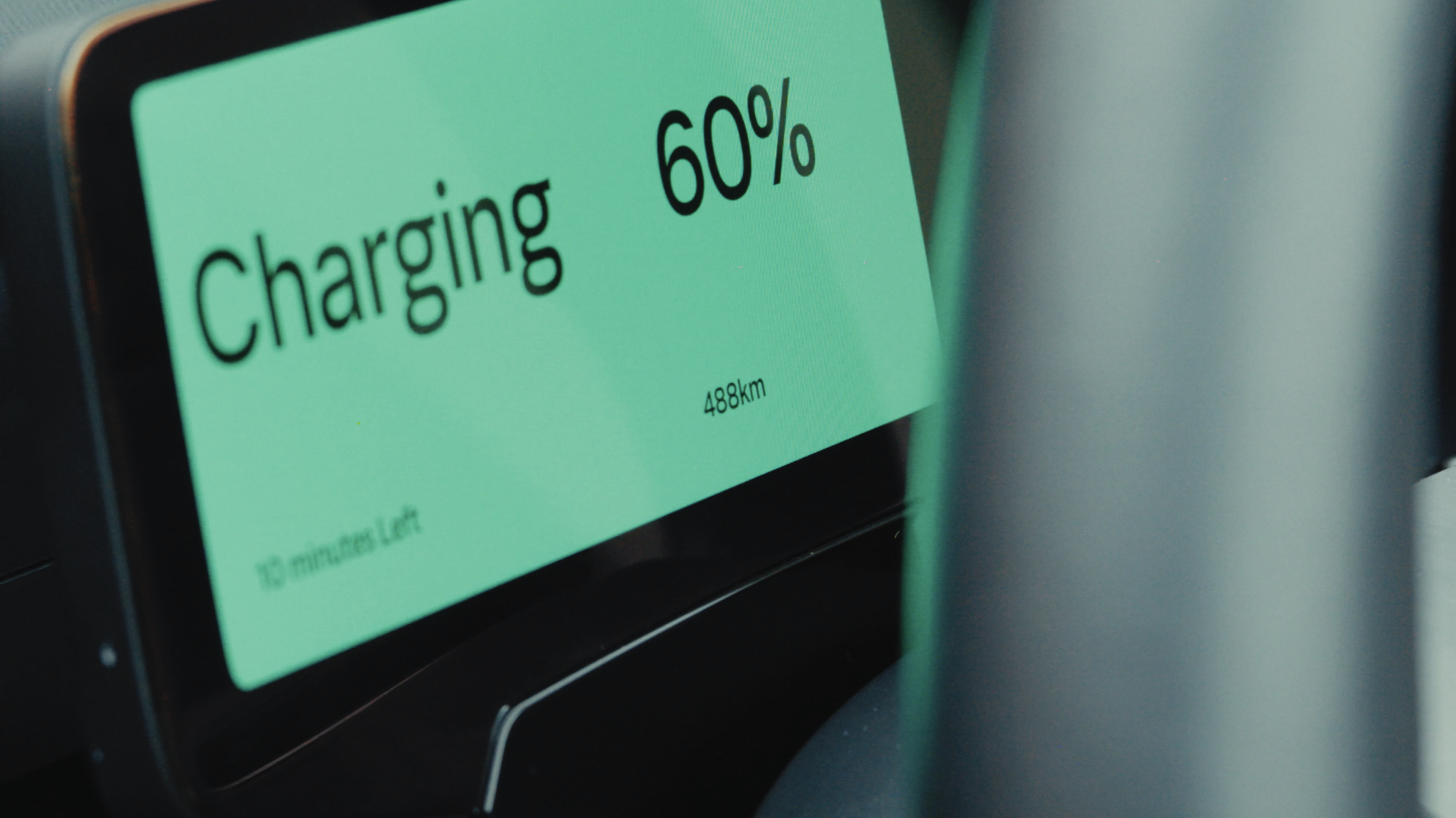 Volvo’s quest for safety has resulted in this new, ultra-legible in-car typeface, Volvo Centum
Volvo’s quest for safety has resulted in this new, ultra-legible in-car typeface, Volvo CentumDalton Maag designs a new sans serif typeface for the Swedish carmaker, Volvo Centum, building on the brand’s strong safety ethos
-
 We asked six creative leaders to tell us their design predictions for the year ahead
We asked six creative leaders to tell us their design predictions for the year aheadWhat will be the trends shaping the design world in 2026? Six creative leaders share their creative predictions for next year, alongside some wise advice: be present, connect, embrace AI
-
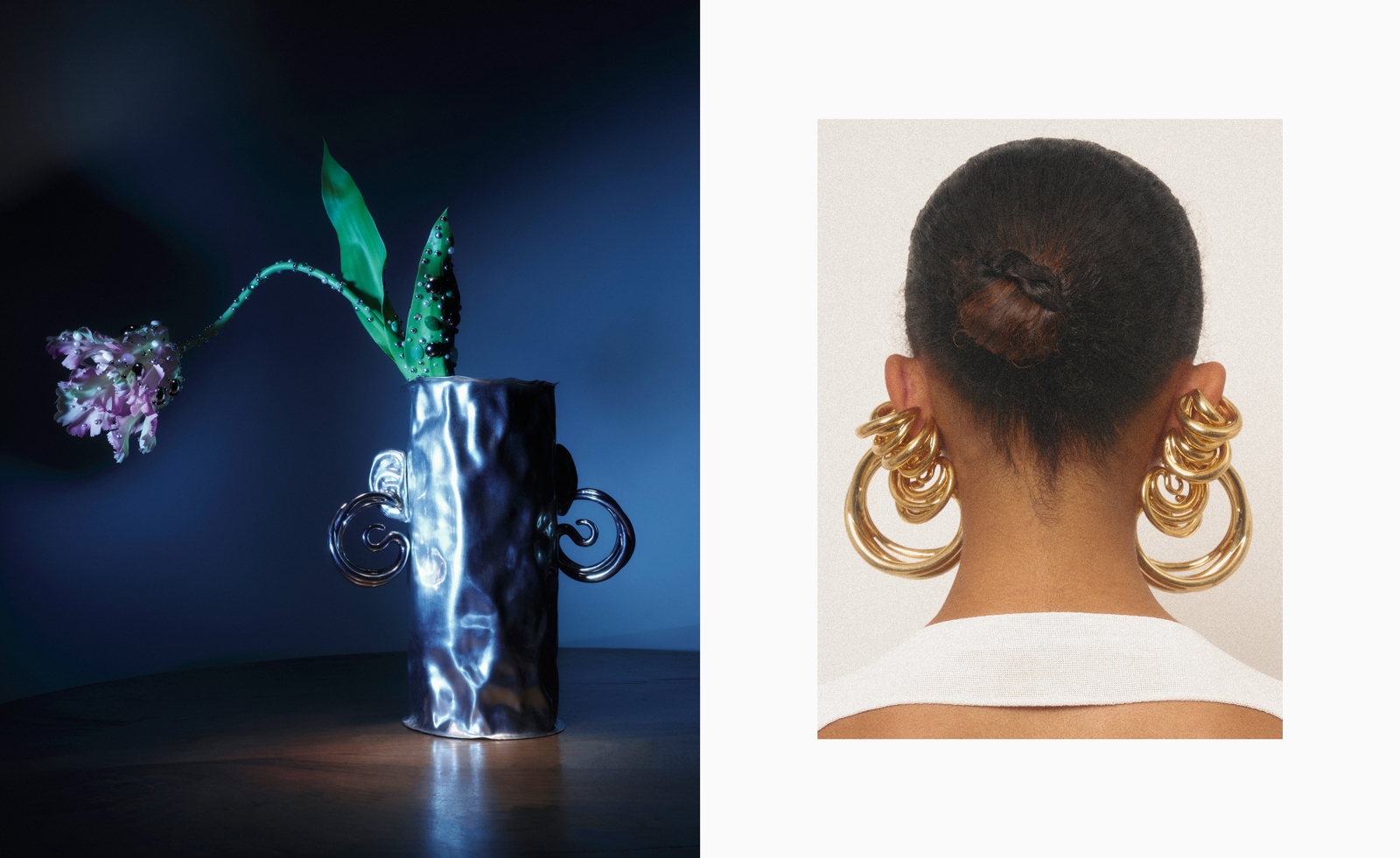 10 watch and jewellery moments that dazzled us in 2025
10 watch and jewellery moments that dazzled us in 2025From unexpected watch collaborations to eclectic materials and offbeat designs, here are the watch and jewellery moments we enjoyed this year
-
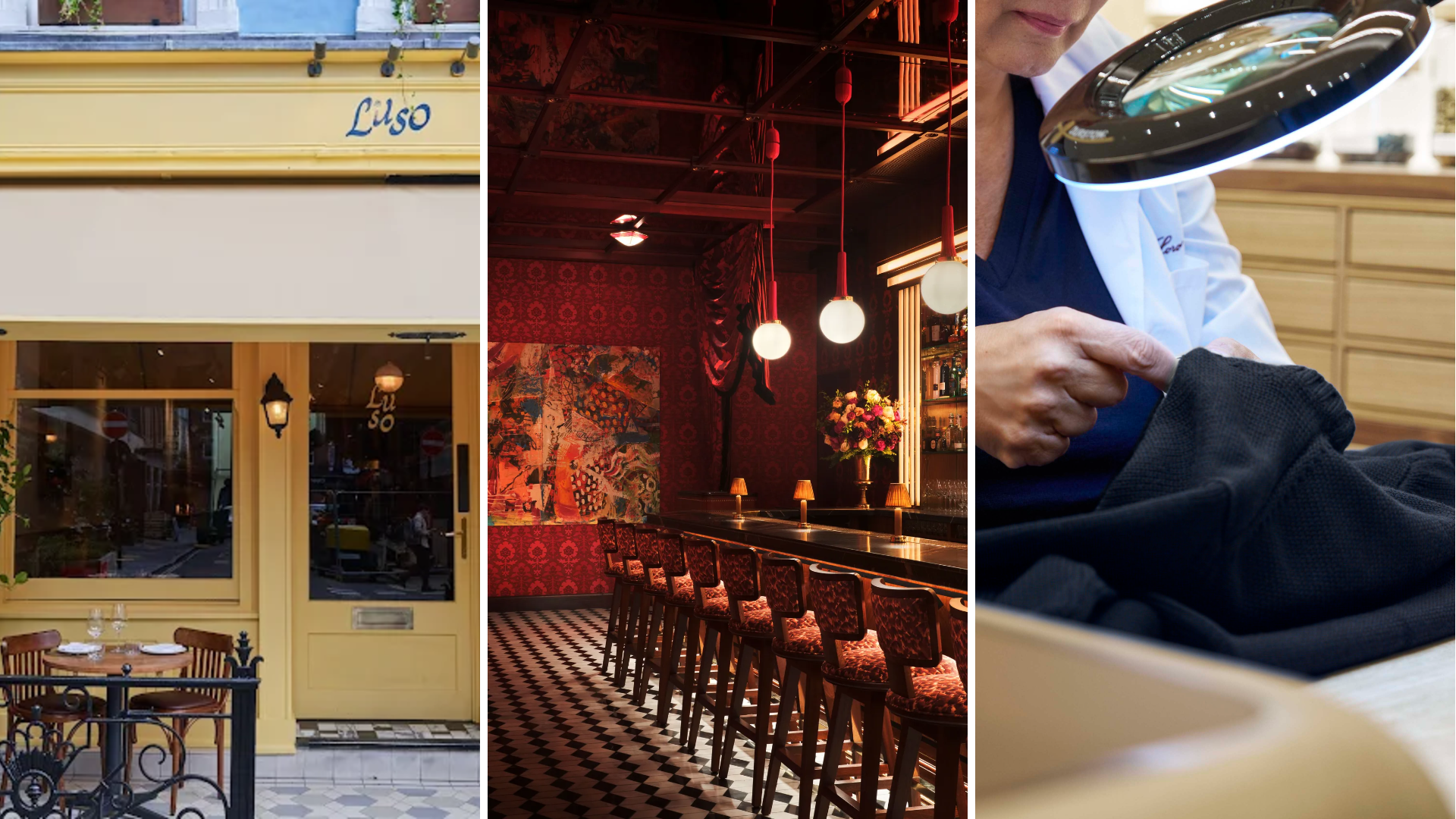 Out of office: The Wallpaper* editors’ picks of the week
Out of office: The Wallpaper* editors’ picks of the week'Tis the season for eating and drinking, and the Wallpaper* team embraced it wholeheartedly this week. Elsewhere: the best spot in Milan for clothing repairs and outdoor swimming in December
-
 Out of office: The Wallpaper* editors’ picks of the week
Out of office: The Wallpaper* editors’ picks of the weekFar from slowing down for the festive season, the Wallpaper* team is in full swing, hopping from events to openings this week. Sometimes work can feel like play – and we also had time for some festive cocktails and cinematic releases
-
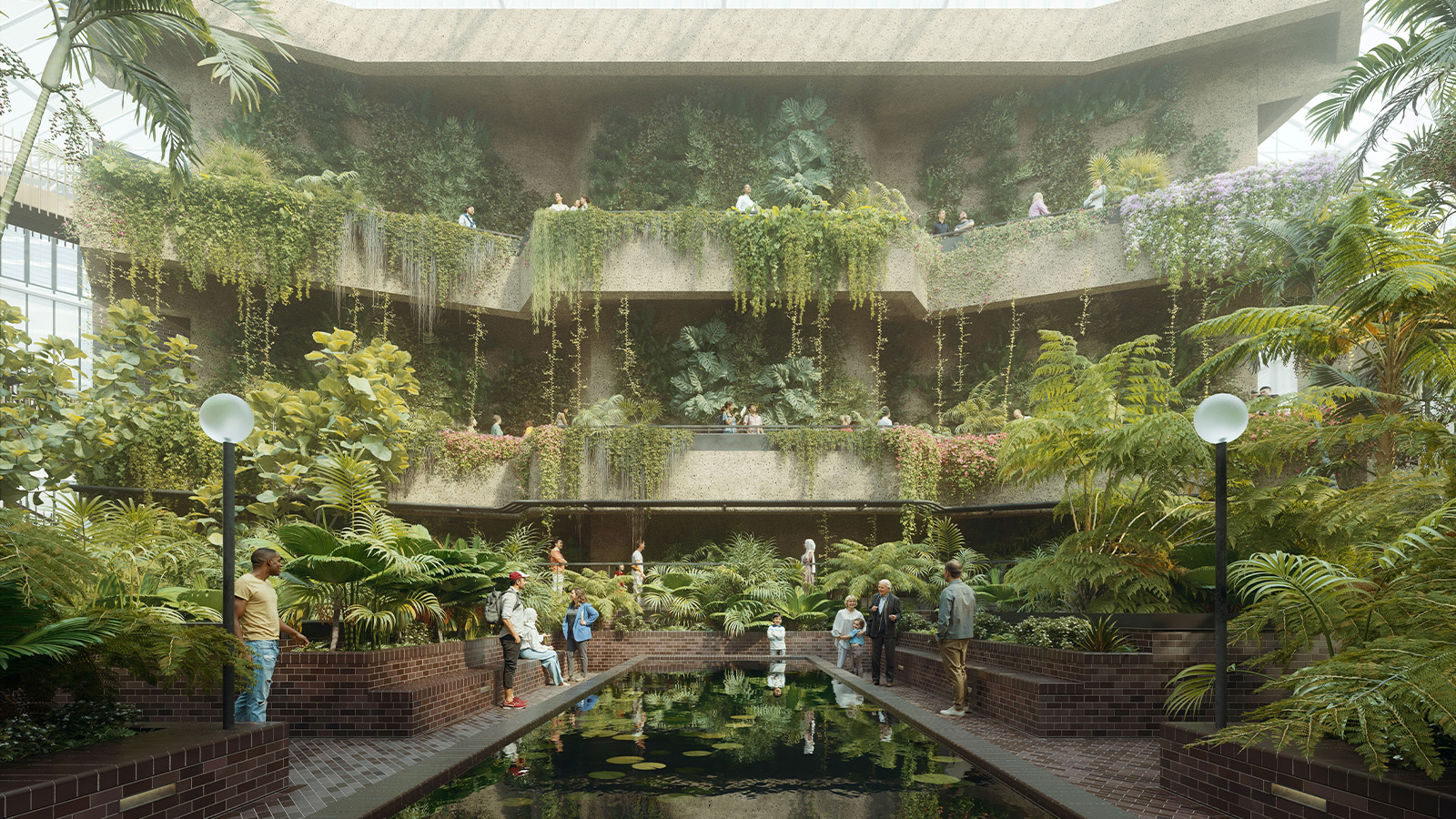 The Barbican is undergoing a huge revamp. Here’s what we know
The Barbican is undergoing a huge revamp. Here’s what we knowThe Barbican Centre is set to close in June 2028 for a year as part of a huge restoration plan to future-proof the brutalist Grade II-listed site
-
 Out of office: The Wallpaper* editors’ picks of the week
Out of office: The Wallpaper* editors’ picks of the weekIt’s wet, windy and wintry and, this week, the Wallpaper* team craved moments of escape. We found it in memories of the Mediterranean, flavours of Mexico, and immersions in the worlds of music and art
-
 Each mundane object tells a story at Pace’s tribute to the everyday
Each mundane object tells a story at Pace’s tribute to the everydayIn a group exhibition, ‘Monument to the Unimportant’, artists give the seemingly insignificant – from discarded clothes to weeds in cracks – a longer look
-
 Out of office: The Wallpaper* editors’ picks of the week
Out of office: The Wallpaper* editors’ picks of the weekThis week, the Wallpaper* team had its finger on the pulse of architecture, interiors and fashion – while also scooping the latest on the Radiohead reunion and London’s buzziest pizza
-
 Out of office: The Wallpaper* editors’ picks of the week
Out of office: The Wallpaper* editors’ picks of the weekIt’s been a week of escapism: daydreams of Ghana sparked by lively local projects, glimpses of Tokyo on nostalgic film rolls, and a charming foray into the heart of Christmas as the festive season kicks off in earnest
-
 Wes Anderson at the Design Museum celebrates an obsessive attention to detail
Wes Anderson at the Design Museum celebrates an obsessive attention to detail‘Wes Anderson: The Archives’ pays tribute to the American film director’s career – expect props and puppets aplenty in this comprehensive London retrospective